I have always had a passion for chocolate, dark chocolate precisely, the darker the better. I love the one with 75% of cocoa minimum, otherwise all I can taste is the sugar, and I wouldn’t want to lose the typical bitter notes of its flavour!
Despite knowing it might not be the right season yet, I feet an intense chocolate craving, maybe due to Autumn already showing its face, and so while I think about some recipes to go with the mood, here is all you need to know about dark chocolate, and why it is indeed good for your health. In fact, despite my choice being dictated by personal taste, dark chocolate is the healthier one, and the one that has more benefits for our wellbeing.
A little bit of history
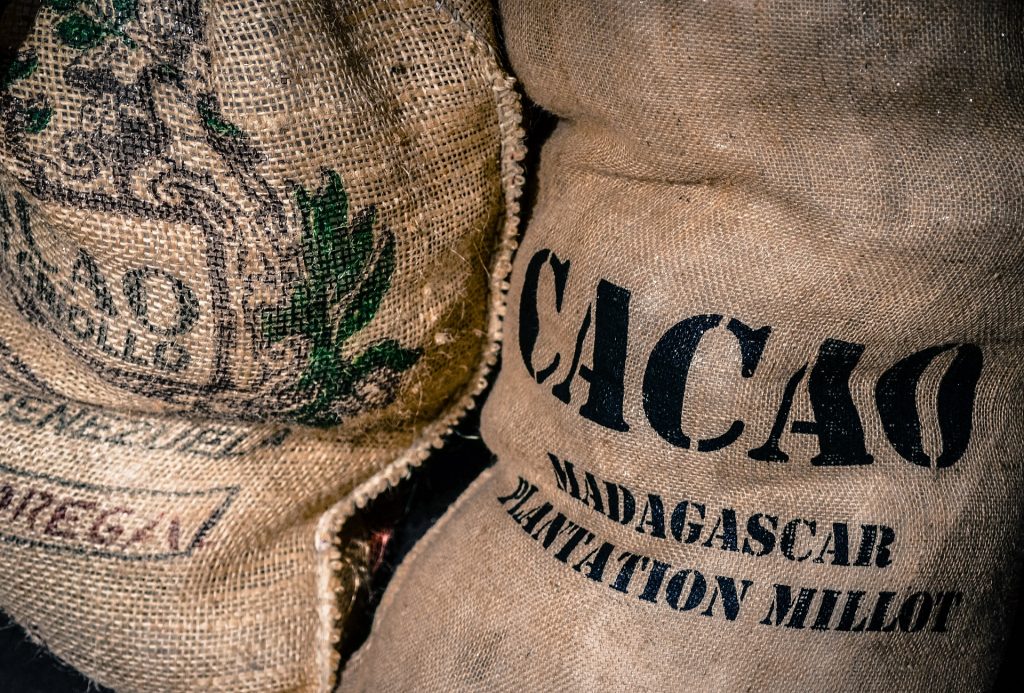
If we take a step back, around 1100-1200 a.d. the Maya were the first to cultivate the cocoa tree, and the Aztec then take the cultivation to another level: in their society the cocoa bean was used as currency, given their value. They learned to grill the beans, and then beat them and crash them until they become a paste, used to prepare a drink called “xocoatl” or “chocolatl”, whose name derived from “Xoc” – the sound made by a utensil called molinet to crash the beans- and “Latl” water. The drink is quite strong and it’s corrected with spices but it maintains a strong and bitter flavour.
We need to wait 1600 to see cocoa importation in Europe, and the industrial revolution in 1800 to see a machine that changed cocoa consumption for good: mechanical crashing of the cocoa beans, made the preparation of chocolate jump to industrial level, prompting the development of a real art.
Since then, Cocoa Tree plantations grew up all over the southern hemisphere, and are now in great part of Africa, sub-tropical areas of Asia, and America of course. Just consider that now Africa produces 70% of the world cocoa. The best quality cocoa is estimated to be the Ecuadorian one, together with the one produced in Mexico and Guatemala.
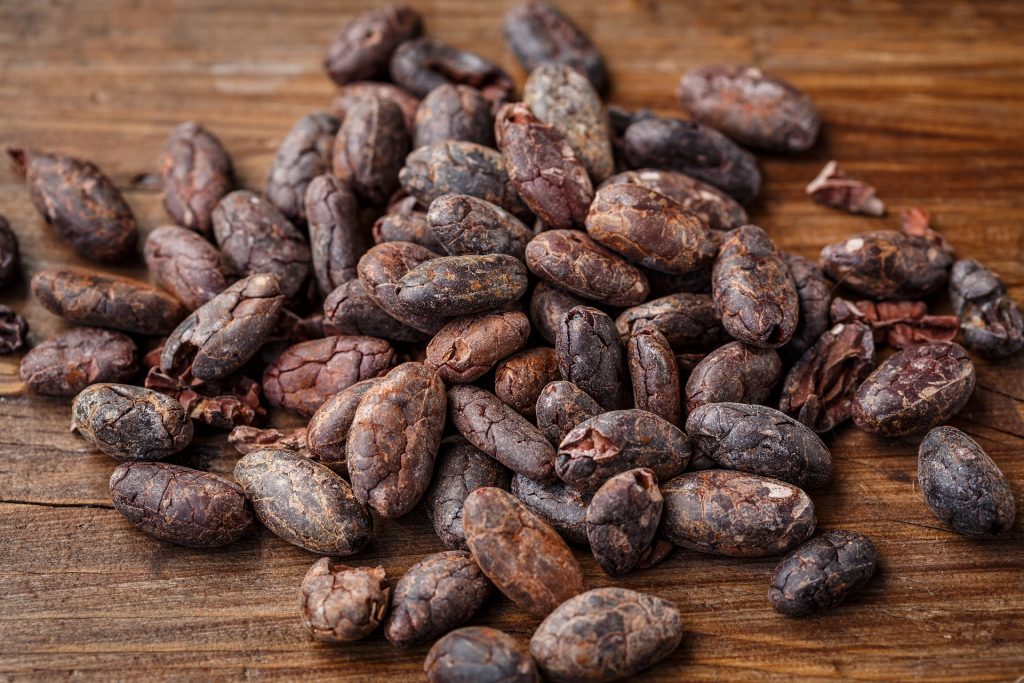
A boost of energy for your body
Cocoa is one of the most nutritious food. At the beginning of second world war the Pentagon commissioned the study and production of chocolate tablets that could resist various climates, and that would last in the soldiers’ backpack. In fact, the expert nutritionist had established that chocolate ensured an irreplaceable energy source for the men in battle.
Its best feature is the high concentration and delicate balance between the 3 main food components: fats, carbohydrates and proteins.
100g of dark chocolate provide 506 calories, against the 170 calories provided by meat, and 250 provided by bread.
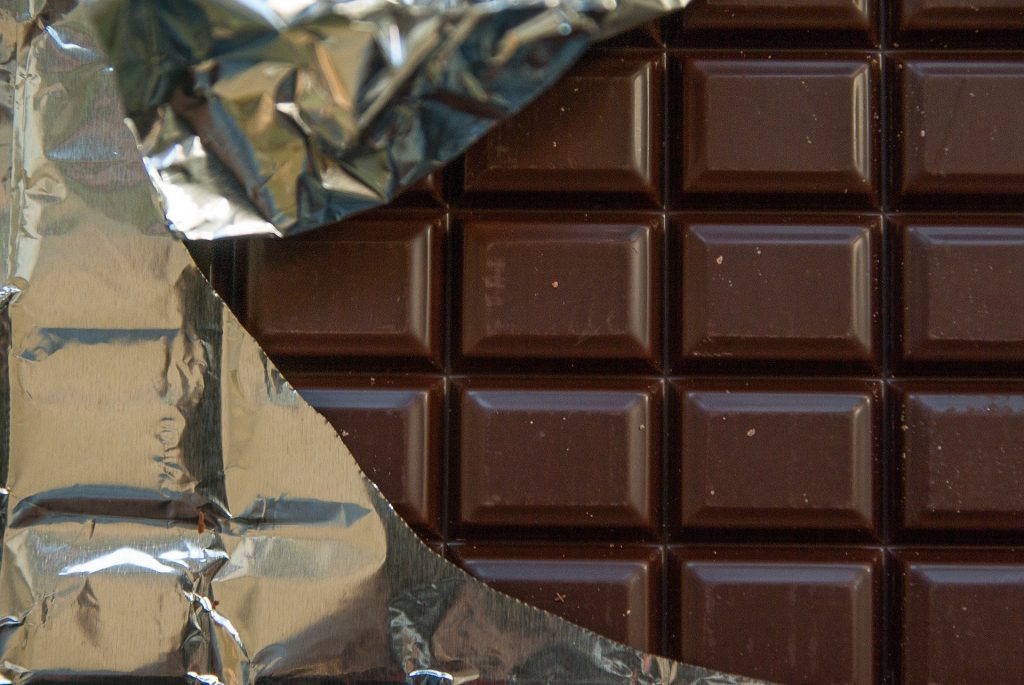
Why dark chocolate is good for you
Dark chocolate contains a high amount of minerals, like phosphorus, magnesium, copper, which are very helpful for our wellbeing.
Magnesium is active on muscular contraction, being helpful for people with an increased physical activity, and for who suffers from cramps. It is a great ally to fight PMS as well. Phosphorus and copper are really helpful in boosting brain activity, helping out mnemonic capabilities.
It contains theobromine and caffeine as well, nervine substances that can exercise a bland exciting action. (But in much lower quantity, respectively 1.25% and 0.15%).
Dark chocolate is also rich in antioxidants: flavanols, known as well as catechins, are the principal phytochemical compound in cocoa beans. Being so rich in flavanols cocoa has a good effect on our circulatory system, and according to many studies, its action prevents oxidation of LDL cholesterol, which is the first cause of atherosclerosis, and studies suggest a link between high cocoa or chocolate intake of 6 grams daily (1-2 small squares) and a reduced risk of heart disease.
Choose the right chocolate
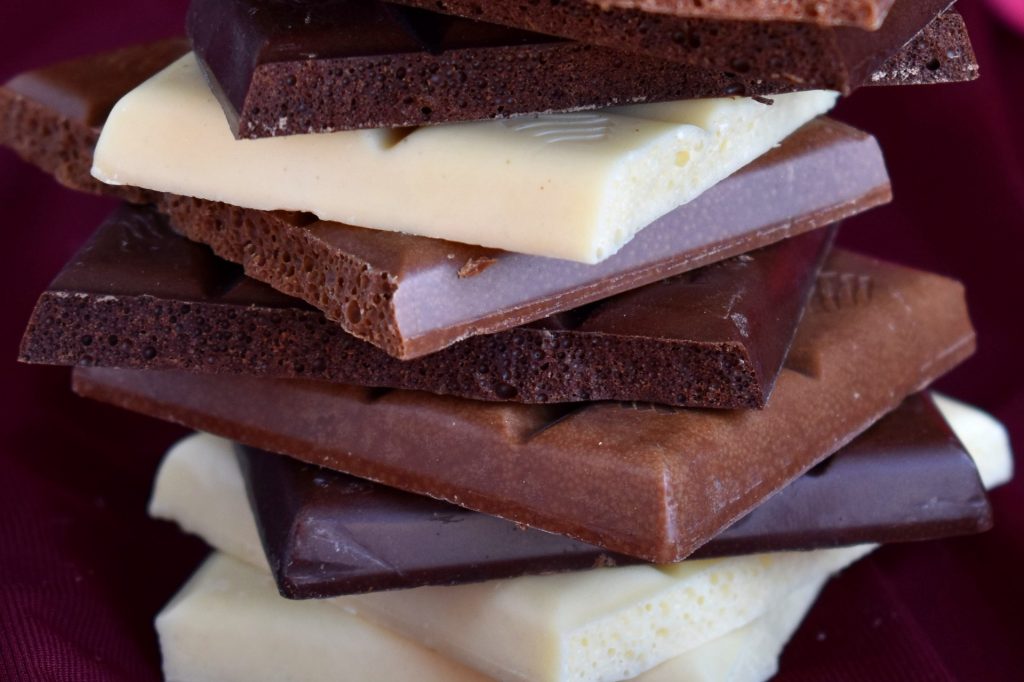
It’s better to choose dark chocolate with a high percentage of cocoa (ideally 70% minimum), for its greater content of minerals, whilst milk chocolate or white chocolate have a higher percentage of sugar and fats, and of cocoa itself!
Let’s dive in the different products to give you an understanding of the what chocolate is really made of.
Cocoa Powder
Is the residue of the cocoa paste press to obtain cocoa butter. It appears as a very fine powder, to which a 24% of cocoa butter has been added back. Its taste is quite bitter and strong and it has red-brownish colour, if it is too dark might be the result of low-quality cocoa beans used to produce it.
Cocoa Butter:
It is actually the substance we extract when pressing the cocoa beans paste. It’s highly used by cosmetic industry, whilst in the food industry is mainly used as main component of white chocolate: made only by cocoa butter, sugar and powdered milk.
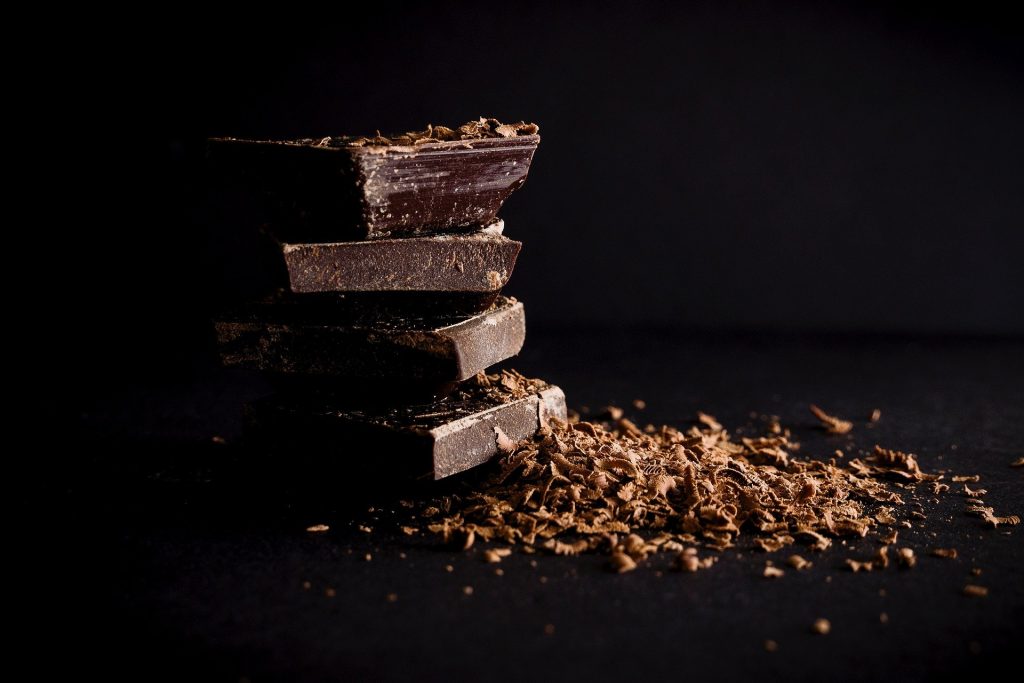
Dark chocolate
We call dark chocolate a type of chocolate which easily melt in out mouth with a smooth texture. It contains on average the higher percentage of cocoa, compared to all the other cocoa products: it has between the 50% and 90% of cocoa solids, the 26% of cocoa butter, and below the 55% of sugar. Its lower content in sugar and fat and higher content of cocoa makes it the healthier choice!
Milk Chocolate
To produce milk chocolate, we use only from 10% to 50% (usually 25%) of cocoa solids, with cocoa butter and the addition of powdered or condensed milk, 3.5% milk fats, and 55% of sugar or more.
Please consider that the lower the quality of the chocolate the poorer the recipe: beware of products where there is an addition of butter fat, vegetable oils and artificial colours or flavours!
What is your favourite chocolate? Did you know already the differences within all the chocolate types? Let me know in the comment! And follow this space for some glorious and decadent chocolate recipes.
Image credits:
1- Image by Rudy and Peter Skitterians from Pixabay
2- Image by Pixabay
3- Image by jacqueline macou from Pixabay